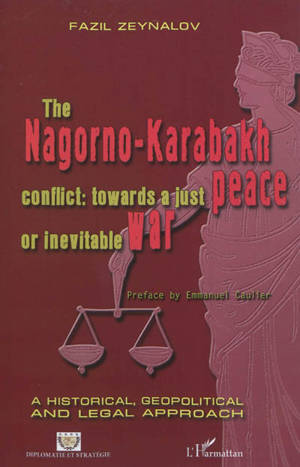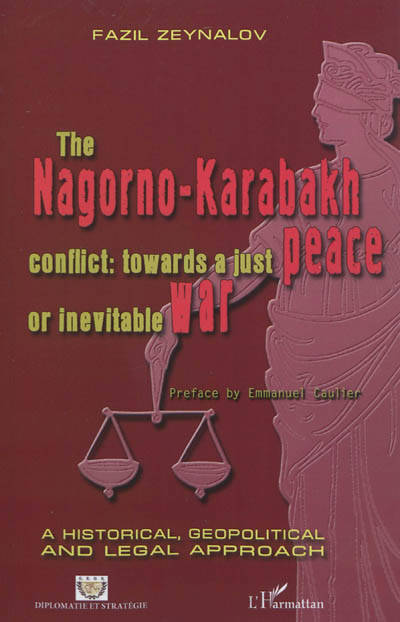
- Retrait gratuit dans votre magasin Club
- 7.000.000 titres dans notre catalogue
- Payer en toute sécurité
- Toujours un magasin près de chez vous
- Retrait gratuit dans votre magasin Club
- 7.000.0000 titres dans notre catalogue
- Payer en toute sécurité
- Toujours un magasin près de chez vous
The Nagorno-Karabakh conflict, towards a just peace or inevitable war
a historical, geopolitical and legal approach
Fazil ZeynalovDescription
The purpose of this book is to analyse the conflict in Nagorno-Karabakh from a historical, geopolitical and legal perspective. This is a deep-rooted conflict which flared up several times during the course of the 20th century. Many people believe it to be a « frozen » conflict, while in fact there could be a return to fighting at any time, much like the recent armed conflict in South Ossetia. The inter-state nature of the conflict means this could destabilise the entire region. The involvement of external powers and the possibility of disruption to the East-West energy corridor, with Azerbaijan at its heart, is an indication of just how dangerous a return to hostilities would be. After the fall of the Soviet Union, the OSCE became involved in the peace process by establishing the Minsk Group in an effort to find a peaceful solution to the conflict. Almost two decades of diplomacy have been unsuccessful, raising many questions about the Group's ability to steer the parties towards a satisfactory peace accord, the only acceptable solution if a fresh outbreak of war is to be avoided. However, the interests of major powers and neighbouring countries such as Russia, the United States, Turkey and Iran in relation to the geo-strategic position of the Caucasus and the natural resources beneath the Caspian Sea make it difficult to resolve the situation through joint efforts. Indeed, during the period of conflict the peace process was tainted by rivalry and competition between Russia and the Minsk Group. Azerbaijan and Armenia have come out in favour of a peaceful solution, but the negotiations have stalled and the threat of war continues to hang over the region. Given the weaknesses of the international institutions, it is down to the wisdom and responsibility of the leaders on both sides finally to agree on a peaceful outcome that would allow the two neighbouring countries to live in harmony.
Spécifications
Parties prenantes
- Auteur(s) :
- Traducteur(s):
- Editeur:
Contenu
- Nombre de pages :
- 430
- Langue:
- Anglais
Caractéristiques
- EAN:
- 9782296995932
- Date de parution :
- 20-06-12
- Format:
- Livre broché
- Dimensions :
- 160 mm x 240 mm
- Poids :
- 665 g

Les avis
Nous publions uniquement les avis qui respectent les conditions requises. Consultez nos conditions pour les avis.






